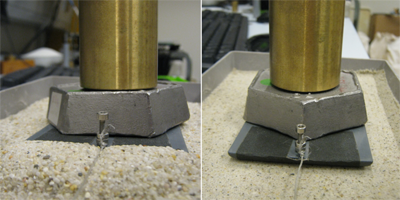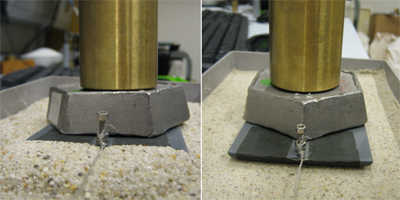Sliding Sand
Everyone who has been to the beach will know that dry sand doesn’t make good sandcastles—the grains slump into a puddle when the bucket is lifted. Adding water can solve this problem: the grains stick and the castle holds its shape. This is due to liquid bridges that start to form between the grains when water is added. Once there is enough water, these bridges act like glue, keeping the grains in place. This is great for sand castle building, and also, it turns out, for sand transportation. Writing in Physical Review Letters, Daniel Bonn from the University of Amsterdam, Netherlands, and colleagues show that adding water to sand significantly reduces the sliding friction of an object moving over the sand, but only for small amounts of water.
Bonn et al. tested the sliding friction of dry and wet sand when a weighted sled was pulled across the surface. As water was added, both the force needed to pull the sled and the friction coefficient were found to decrease below that of the dry sand, before increasing at higher water contents. When the sand was dry, a heap of sand formed in front of the sled, hindering its movement; a relatively high force was needed for the sled to reach a steady state. Adding water made the sand more rigid, and the heaps decreased in size until no heap formed in front of the moving sled and therefore a lower applied force was needed to reach a steady state. Why then did the sliding friction increase at higher water contents? The authors suggest that this was due to a decrease in the stiffness accompanying water saturation, similar to that seen in sandcastles—add too much water and the capillary bridges, which previously acted like a glue between individual grains, start to merge and disappear. – Katherine Wright





